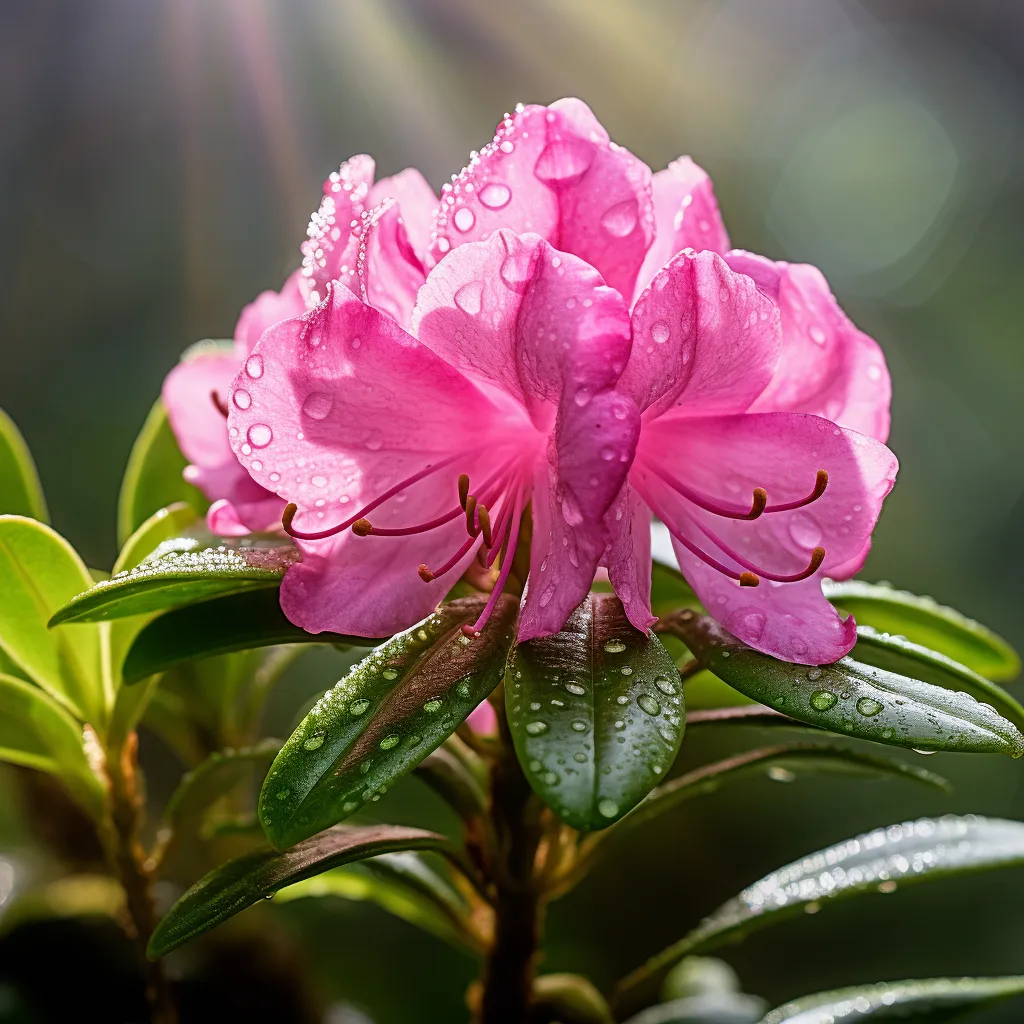Story of Day :
Contents
Rhododendron Shamrock (Rhododendron Shamrock) Plant Care Tips
Are you a fan of rhododendrons? If so, you’re in for a treat because today we’re going to talk about Rhododendron Shamrock! This beautiful evergreen shrub is known for its stunning foliage and vibrant flowers.
In this article, we’ll share some care tips that will help you keep your Rhododendron Shamrock happy and healthy.
1.
Choosing the Right Location
Before planting your Rhododendron Shamrock, it’s essential to select the right location.
These plants prefer partial shade or filtered sunlight, so avoid planting them in areas with full sun exposure.
Additionally, make sure the soil is well-draining and rich in organic matter.
Acidic soil with a pH level between 4.5-6 is ideal for these plants.
2.
Watering

Rhododendrons are shallow-rooted plants that require regular watering to thrive.
During the growing season, it’s important to keep the soil consistently moist but not waterlogged.
A good rule of thumb is to water deeply once or twice a week rather than giving them frequent shallow watering sessions.
Tips:
- Water early in the morning or late in the evening when evaporation rates are lower.
- Avoid overhead watering as it can lead to fungal diseases; instead, use drip irrigation or water at ground level.
- If you live in an area with heavy rainfall, consider providing extra drainage by amending the soil with organic matter or using raised beds.
3.
Fertilizing
Regular fertilization is essential for the healthy growth of Rhododendron Shamrock.
Use a slow-release, acid-loving fertilizer in early spring or late fall.
Be sure to follow the manufacturer’s instructions regarding application rates.
Tip:
- Avoid overfertilization as it can lead to root burn and damage the plant.

4.
Pruning
To maintain a compact shape and encourage more blooms, regular pruning is necessary for Rhododendron Shamrock.
The best time to prune these plants is after they finish flowering.
Remove any dead or damaged branches, and trim back any overly long or leggy stems.
Tips:
- Sterilize your pruning tools with rubbing alcohol before use to prevent the spread of diseases.
- Avoid heavy pruning as it can stress the plant; instead, opt for light shaping cuts.
5.
Pest and Disease Control

Rhododendrons are generally resilient plants but can be susceptible to certain pests and diseases such as aphids, spider mites, leaf spots, and root rot.
Regular monitoring of your plants will help you identify any issues early on so that you can take appropriate measures to control them.
Tips:
- If you notice pest infestations, try using organic insecticides or applying neem oil as a deterrent.</li